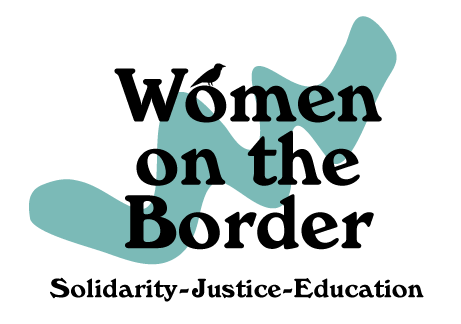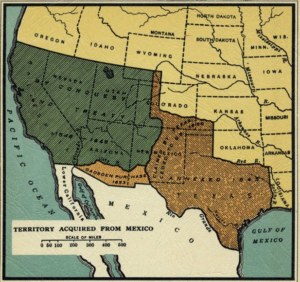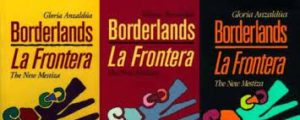The US-Mexico Border
History of the US-Mexico Border
The US-Mexico border was drawn on the map more or less as we know it today by the Treaty of Guadalupe Hidalgo in 1848, which ended the Mexican War. After the US victory, Mexico was forced to cede 1/3 of it’s territory, which included California, Arizona, New Mexico, and Texas. Since then, the US has been the more powerful of the two nations sharing the border. The people, goods, languages, and cultures that once moved freely across the landscape, must now negotiate a border geography that splits families, communities, and ecosystems.
From the outset the existence of the borderline offered opportunities for commerce. Laborers and those buying and selling goods and raw materials began to take advantage of the dividing line, both within and outside of the law, to maximize their profits.
The Border Industrialization Program of the mid-1960s brought transnational manufacturing to the US-Mexico border and US companies quickly began to take advantage of the low wages and tax exemptions offered in newly-created free-trade zones on the Mexican side. (read more about maquiladoras here). With NAFTA in 1993 and the USMCA in 2018, the border zone has become an important site for globalized manufacturing in many industries, including automobiles, electronics, and medical supplies. The border has also become a site for illicit traffic as well, including guns and drugs, adding to the often unfair perception that all contact with the U.S.-Mexico border is linked to violence.
For a list of recommended reading on border industrialization see the Women and Globalization section in our bibliography.
Border Enforcement
The border is an abstract line on the map that is made real in practice by the power of the state in the form of walls, fences, checkpoints, and both human and technological survelillance. The nation-state claims the power to regulate commerce and the movement of persons — to ease movement or to stop it. US immigration policy expands and contracts the flow of people crossing depending on labor demand.
(For a summary of the relationship between commerce and law enforcement at the border see our Immigration Timeline.)
Since the early 1990’s, the shift towards a strategy of “deterring” migrants by pushing them towards more hostile terrain has led to growing number of migrant deaths. The distinction between human migration and the flow of drugs across the southern border has also become blurred, as has the distinction between migration and criminality. Border enforcement has become increasingly militarized, and the use of technology derived from desert warfare has been normalized. (See work by Dunn, Kovic, and others in our Migrants & Human Rights bibliography).
While US border policy fluctuates for political and economic reasons, migrants continue to come in search of economic opportunities and safety from poverty, corruption, and violence in their homelands.
For visual images of the physical barriers in place at the US-Mexico border see these photo essays from CNN and the NY Times.
Border Zones
The US-Mexico border is a binational, bicultural space in which millions of people live and work. Some spend their entire lives in it; others pass through on the way to somewhere else. Gloria Anzaldúa writes: “The U.S.-Mexican border es una herida abierta where the Third World grates against the first and bleeds. And before a scab forms it hemorrhages again, the lifeblood of two worlds merging to form a third country — a border culture.”
The borderlands is a potent space for cultural critique, for deconstructing structures of power that fix categories such as nation, culture, gender, and race. Border artists and writers such as Gloria Anzaldúa, Guillermo Gomez Peña and the Border Arts Workshop/Taller de Arte Fronterizo, and Ronald Rael have all contributed to our understanding of the borderlands. The border is a place where power and inequality show themselves in everyday life and also (and because of this) a place where cultural critique and subversion have long flourished.
Go to our Bibliography page for a list of recommended readings on the borderlands.
To see some of the important creative work emerging from/at the US-Mexico border go to our Visual Arts section.
The Border as Signifier
Why is the threat of “open borders” such a powerful political weapon in the contemporary US? What would happen if we lost control of our border? The border is a powerful symbol of the distinction between self and other. When people chant “build a wall” at right wing political rallies in the US they are referring to much more than the construction of a physical barrier, they are signalling their desire for a white-ethnic national space, bounded and controlled, free of dangerous others like “terrorists,” or “criminal aliens.” (see Jason DeLeon interview for the New American Story Project.)
Women on The Border’s website asks: What are the real world effects of this border imaginary? How do anxieties about race become laws and concrete/steel barriers that deny the history and the basic human rights of women and men living in and crossing the borderlands? And how can we dismantle this racist and xenophobic rhetoric?
One way is to showcase the work of citizens of the borderlands — their creativity, collaboration, and hopefulness. Another is to promote scholarship and the understanding of interconnectedness and history, and to encourage activism with the goals of freedom, justice, and human dignity.
Contact Us
Email: info@womenontheborder.org
Write: PO. Box 303338, Austin, TX 78703
Or find us through Facebook Messenger
Or use our Contact Form
Women on the Border is a 501(c)3 nonprofit organization,
Tax ID 74-3003850.
Contact Us
Email: info@womenontheborder.org
Write: PO. Box 303338, Austin, TX 78703
Or find us through Facebook Messenger
Or use our Contact Form
Women on the Border is a 501(c)3 nonprofit organization,
Tax ID 74-3003850.




